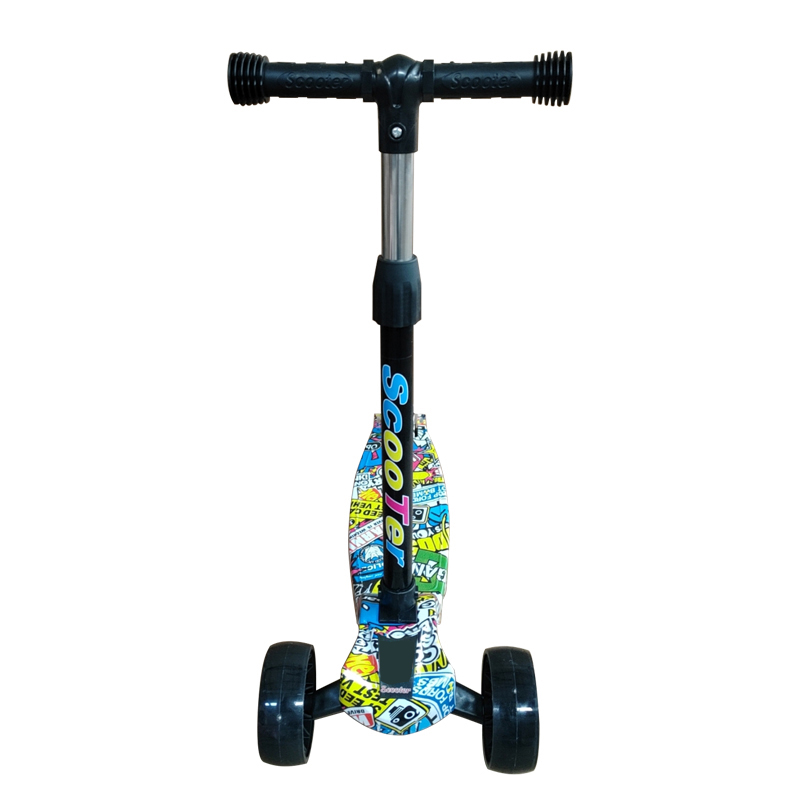Choosing the Right Size of Kids' Scooter A Comprehensive Guide
Scooters have become an irresistible attraction for children, offering an exciting way to explore the outdoors while promoting physical activity. However, selecting the right size of scooter is crucial to ensure both safety and enjoyment. The size of a kids' scooter generally pertains to its height, weight capacity, wheel size, and deck size. This guide aims to provide parents with the necessary information to choose the ideal scooter for their child based on these key factors.
Understanding Scooter Dimensions
1. Height of the Scooter The height of the handlebars is one of the most vital specifications when choosing a scooter. Generally, the handlebars should reach a child's waist, allowing them to maintain good posture while riding. If the handlebars are too low, children will have to bend over, leading to discomfort. Conversely, if they are too high, it can be challenging for kids to control the scooter effectively. Adjustability is a beneficial feature; many scooters come with height-adjustable handlebars catering to a range of heights.
2. Weight Capacity Safety is paramount when selecting a scooter. Each scooter is designed for specific weight limits, and choosing one that exceeds or falls below this can be dangerous. Always check the manufacturer's specifications. A scooter that can safely accommodate your child's current weight, with some allowance for growth, is ideal. This consideration ensures that your child will not outgrow their scooter too quickly and can use it for several years.
3. Wheel Size and Type The size of the wheels on a scooter significantly affects its performance and stability. Smaller wheels (below 100mm) are usually faster and more agile but can be harder to ride on uneven surfaces. They are great for flat terrains and tricks. Conversely, larger wheels (above 100mm) offer better stability and a smoother ride, making them more suitable for rough surfaces or longer rides. Additionally, consider the wheel type; some scooters come with solid wheels, while others feature inflatable options. Inflatable wheels tend to provide better shock absorption, contributing to a more comfortable ride, especially on bumpy ground.
kids scooter size

4. Deck Size The width and length of the deck can also influence your child's riding experience. A wider deck offers more stability and can make it easier for kids to balance, especially when they are new to scooting. A longer deck may be better for older or taller children, providing ample space for their feet and allowing for a more comfortable stance. It’s important to find a deck size that suits your child’s foot size as well as their level of confidence.
Safety Features
Apart from size considerations, safety features should not be overlooked. Look for scooters that have robust braking systems, such as foot brakes that allow for easy stopping. Reflective details can increase visibility during low-light conditions, and non-slip surfaces on the deck provide added grip for secure footing. A lightweight scooter can also enhance maneuverability, allowing kids to navigate easily and reduce the risk of falls.
Conclusion
When selecting a scooter for your child, it is essential to take the time to evaluate their size, weight, and skill level. A well-sized scooter not only enhances the riding experience but also builds confidence as your child learns to balance and steer effectively. Opting for a scooter that can grow with your child, along with features that maximize safety and enjoyment, will ensure that they have countless hours of fun while scootering.
Remember, the right scooter can inspire a love for outdoor activities and encourage healthy habits from a young age. So, gear up, get out there, and enjoy the ride!
-

 Scoot&RideKids Child Kick Push Scooter 3 Wheels with LED Flashing Tilt Lean Boys Girls Scooter
Scoot&RideKids Child Kick Push Scooter 3 Wheels with LED Flashing Tilt Lean Boys Girls Scooter




- 4
$33.17 -

 Scoot&RideKids Scooter Child Kick Flashing LED Light Up 3 Wheel Push Adjustable Folding 3
Scoot&RideKids Scooter Child Kick Flashing LED Light Up 3 Wheel Push Adjustable Folding 3- 0
$25.52 -

 Scoot&RideKids Scooter Child Kick Flashing LED Light Up 3 Wheel Push Adjustable Folding 2
Scoot&RideKids Scooter Child Kick Flashing LED Light Up 3 Wheel Push Adjustable Folding 2- 0
$33.17 -

 Scoot&RideKids Scooter Teens Foldable Kick Push Scooter Adjustable Height Safe 2 Wheels
Scoot&RideKids Scooter Teens Foldable Kick Push Scooter Adjustable Height Safe 2 Wheels




- 4
$49.99
Meet our partners and discover what powers their creativity!
When you register for a Lohas scooter, you will receive a 10% discount on your first order and can be notified of sales, new product launches and other offers in advance.









